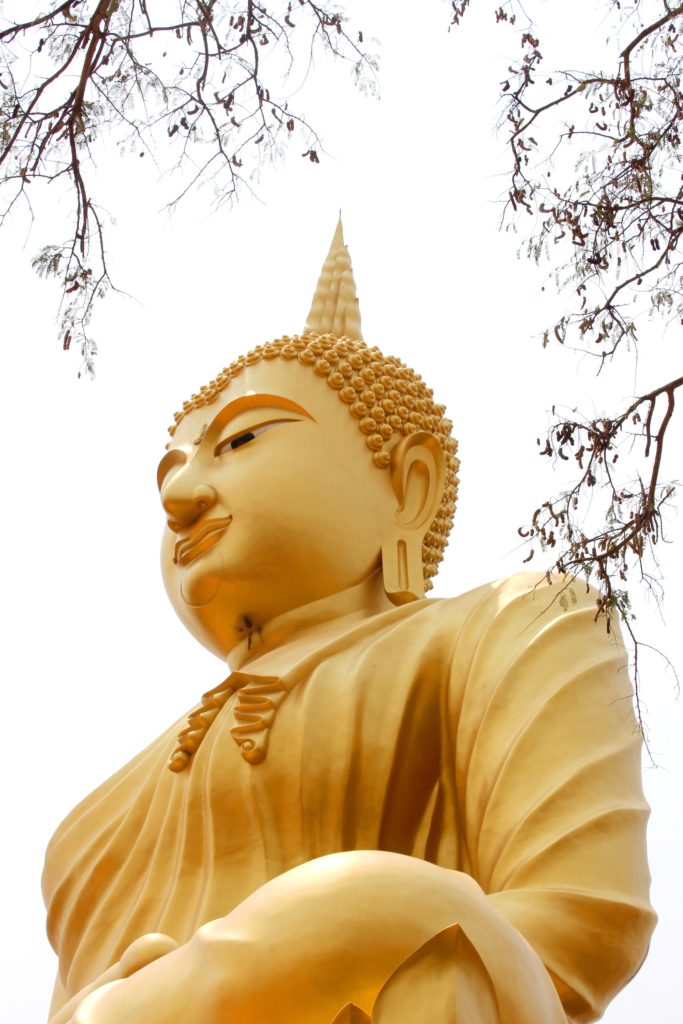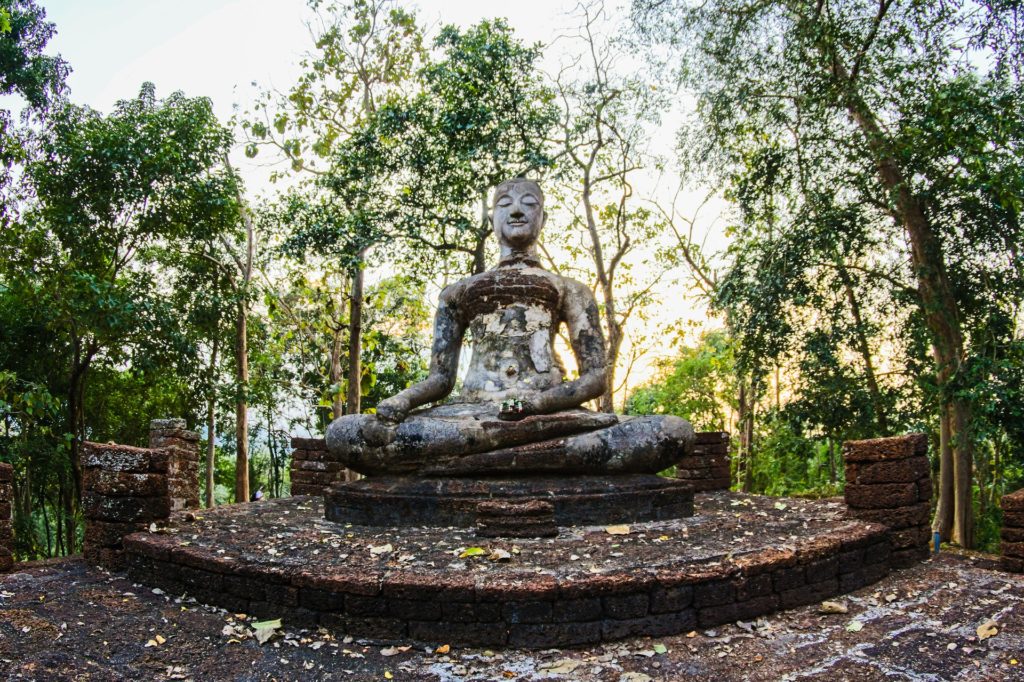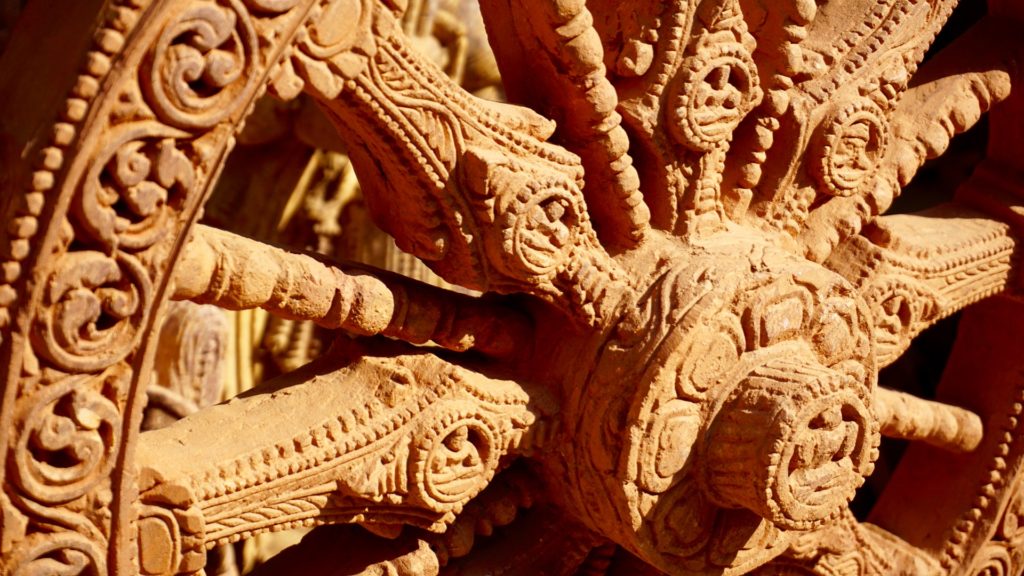
Theravada – Noble Eightfold Path
An important guiding principle of Buddhist practice is the Middle Way (madhyamapratipad). It was a part of Buddha’s first sermon, where he presented the Noble Eightfold Path that was a ‘middle way’ between the extremes of asceticism and hedonistic sense pleasures. In Buddhism, states Harvey, the doctrine of “dependent arising” (conditioned arising, pratītyasamutpāda) to explain rebirth is viewed as the ‘middle way’ between the doctrines that a being has a “permanent soul” involved in rebirth (eternalism) and “death is final and there is no rebirth” (annihilationism).
In the Theravada canon, the Pali-suttas, various often irreconcilable sequences can be found. According to Carol Anderson, the Theravada canon lacks an overriding and comprehensive structure of the path to nibbana. Nevertheless, the Noble Eightfold Path, or “Eightfold Path of the Noble Ones”, has become an important description of the Buddhist path. It consists of a set of eight interconnected factors or conditions, that when developed together, lead to the cessation of dukkha. These eight factors are:
- Right View (or Right Understanding)
- Right Intention (or Right Thought)
- Right Speech
- Right Action
- Right Livelihood
- Right Effort
- Right Mindfulness
- Right Concentration.
This Eightfold Path is the fourth of the Four Noble Truths and asserts the path to the cessation of dukkha (suffering, pain, unsatisfactoriness). The path teaches that the way of the enlightened ones stopped their craving, clinging and karmic accumulations, and thus ended their endless cycles of rebirth and suffering.

Mahayana – Bodhisattva-path and the six paramitas
Dāna or charitable giving to monks is a virtue in Buddhism, leading to merit accumulation and better rebirths. Mahāyāna Buddhism is based principally upon the path of a Bodhisattva. A Bodhisattva refers to one who is on the path to Buddhahood. The term Mahāyāna was originally a synonym for Bodhisattvayāna or “Bodhisattva Vehicle.”
In the earliest texts of Mahayana Buddhism, the path of a bodhisattva was to awaken the bodhicitta. Between the 1st and 3rd century CE, this tradition introduced the Ten Bhumi doctrine, which means ten levels or stages of awakening. This development was followed by the acceptance that it is impossible to achieve Buddhahood in one (current) lifetime, and the best goal is not nirvana for oneself, but Buddhahood after climbing through the ten levels during multiple rebirths. Mahayana scholars then outlined an elaborate path, for monks and laypeople, and the path includes the vow to help teach Buddhist knowledge to other beings, so as to help them cross samsara and liberate themselves, once one reaches the Buddhahood in a future rebirth. One part of this path is the Pāramitā (perfections, to cross over), derived from the Jatakas tales of Buddha’s numerous rebirths.

The Mahayana texts are inconsistent in their discussion of the Paramitas, and some texts include lists of two, others four, six, ten and fifty-two. The six paramitas have been most studied, and these are:
- Dāna pāramitā: perfection of giving; primarily to monks, nuns and the Buddhist monastic establishment dependent on the alms and gifts of the lay householders, in return for generating religious merit; some texts recommend ritually transferring the merit so accumulated for better rebirth to someone else
- Śīla pāramitā: perfection of morality; it outlines ethical behavior for both the laity and the Mahayana monastic community; this list is similar to Śīla in the Eightfold Path (i.e. Right Speech, Right Action, Right Livelihood)
- Kṣānti pāramitā: perfection of patience, willingness to endure hardship
- Vīrya pāramitā: perfection of vigor; this is similar to Right Effort in the Eightfold Path
- Dhyāna pāramitā: perfection of meditation; this is similar to Right Concentration in the Eightfold Path
- Prajñā pāramitā: perfection of insight (wisdom), awakening to the characteristics of existence such as karma, rebirths, impermanence, no-self, dependent origination, and emptiness; this is complete acceptance of the Buddha teaching, then conviction, followed by the ultimate realization that “dharmas are non-arising”.
In Mahayana Sutras that include ten Paramitas, the additional four perfections are “skillful means, vow, power, and knowledge”. The most discussed Paramita and the highest rated perfection in Mahayana texts is the “Prajna-paramita”, or the “perfection of insight”. This insight in the Mahayana tradition, states Shōhei Ichimura, has been the “insight of non-duality or the absence of reality in all things”.
